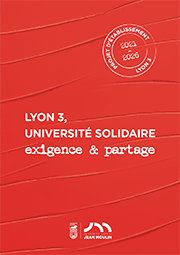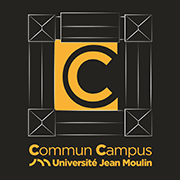AccueilRechercheLes productions scientifiquesThèsesThèses soutenuesThèses soutenues - 2006-2020Thèses soutenues - 2016
-
Partager cette page
- Recherche,
LAVIEILLE Géraldine
L’icône royale. Fabrications collectives et usages politiques de l’image religieuse du roi de France au Grand Siècle
Publié le 16 décembre 2016 – Mis à jour le 20 décembre 2018
Thèse en Histoire mention histoire religieuse, politique et culturelle, soutenue le 18 novembre 2016.
Les transformations qui interviennent en France à la suite des guerres de Religion modifient l’imbrication des sphères politique et religieuse. La scission entre protestants et catholiques, la triple reconstruction religieuse, nationale et étatique, les évolutions des pratiques et croyances religieuses ainsi que la nouvelle vigueur des gallicanismes induisent des mutations dans la dimension religieuse des conceptions du pouvoir royal entre le règne d’Henri IV et celui de Louis XIV, évolutions appréciables sur le plan symbolique. De 1589 à 1715, une iconographie abondante place le roi dans une situation religieuse, le met en rapport avec des personnages saints ou divins, ou souligne
l’importance de son action en matière religieuse. Ces portraits du roi régnant ou de rois défunts, produits en des lieux disséminés sur le territoire métropolitain du XVIIe siècle, révèlent une autre image du pouvoir royal que l’iconographie plus amplement étudiée jusqu’ici. Elle intègre une sacralité héritée, fruit d’une longue construction médiévale dont l’importance se lit toujours au Grand Siècle, et des éléments neufs, qui passent en particulier par l’essor de cultes associant le roi et ses sujets, comme celui de saint Louis ou celui de Marie, marqué par le voeu de Louis XIII. Elle doit en outre se comprendre dans le cadre de l’évolution du droit divin, dans ses rapports avec l’autorité et le pouvoir du roi. L’image d’harmonie qui est élaborée témoigne de la place de cette iconographie dans la légitimation d’un ordre politique et social liant espace terrestre et monde céleste. La genèse de ces objets divers (peintures, sculptures, gravures, etc.), souvent éloignée de la cour, entretenant des relations parfois très ténues avec le pouvoir royal, ne peut être envisagée comme le fruit d’une propagande : elle souligne plutôt des fabrications collectives du portrait religieux du roi. Ainsi, cette thèse propose une histoire culturelle du politique, s’appuyant sur une approche iconographique intégrant les pratiques sociales et les théories politiques.
The transformations that occurred in France after the Wars of Religion altered the interweaving between the political and the religious spheres. The split between Protestants and Catholics, the rebuilding of the church, the nation and the state, the transformations of the religious beliefs and practices, and the new strength of the gallicanisms led to changes in the religious idea of the royal power between the reign of Henry IV and Louis XIV. These evolutions are assessable on a symbolic level. From 1589 to 1715, an abundant iconography places the monarch in a religious situation, puts him in touch with saints or God, or underlines the importance of his action in the religious field.
These portraits of the reigning king or deceased kings, produced in dispatched places in the kingdom, reveal a different image of the royal power than the iconography that has most been studied up to now. It includes an inherited sacrality, built during the Middle Ages and still important in the 17th century, and new elements, which entail the growth of cults associating the monarch and his subjects, such as the cults of saint Louis and the Virgin Mary, marked by the vow of Louis XIII.
It must furthermore be understood within the framework of the evolution of the divine right, in its links with the royal authority and power. It builds an image of harmony that shows the place of the iconography in the legitimization of a political and social order linking terrestrial and celestial spaces. The creation of these objects (paintings, sculptures, engravings, etc.), often far away from the court, often in loose relationships with the royal power, cannot be understood as propaganda: it rather emphasizes collective makings of the religious portrait of the king. Thus, this thesis offers a cultural history of the political field, leaning on an iconographic approach including social practices and political theories.
Mots-Clés : Pouvoir royal, Portrait du roi, Rois et souverains dans l’art, Art et politique, Réforme catholique, Religion et politique, Henri IV (roi de France ; 1553-1610), Louis XIII (roi de France ; 1601-1643), Louis XIV (roi de France ; 1638-1715), France XVIIe siècle.
Keywords : Royal power, Portrait of the King, Kings and rulers in art, Catholic Reform
Political and religious history, Henry IV (king of France ; 1553-1610), Louis XIII (king of France ; 1601-1643), Louis XIV (king of France ; 1638-1715), France 17th century.
Directeur de thèse : Bernard HOURS
Membres du jury :
- Olivier CHRISTIN, Professeur des universités, Université de Neuchâtel, Suisse,
- Fanny COSANDEY, Pré-rapporteur, Maître de conférences HDR, EHESS Paris,
- Annick DELFOSSE, Pré-rapporteur, Professeure des universités, Université de Liège,
- Bernard HOURS, Professeur des universités, Université Jean Moulin Lyon 3,
- Alain TALLON, Professeur des universités, Université Paris IV.
Président du jury : Olivier CHRISTIN
Equipe d'accueil : LARHRA
Décision : Admise
l’importance de son action en matière religieuse. Ces portraits du roi régnant ou de rois défunts, produits en des lieux disséminés sur le territoire métropolitain du XVIIe siècle, révèlent une autre image du pouvoir royal que l’iconographie plus amplement étudiée jusqu’ici. Elle intègre une sacralité héritée, fruit d’une longue construction médiévale dont l’importance se lit toujours au Grand Siècle, et des éléments neufs, qui passent en particulier par l’essor de cultes associant le roi et ses sujets, comme celui de saint Louis ou celui de Marie, marqué par le voeu de Louis XIII. Elle doit en outre se comprendre dans le cadre de l’évolution du droit divin, dans ses rapports avec l’autorité et le pouvoir du roi. L’image d’harmonie qui est élaborée témoigne de la place de cette iconographie dans la légitimation d’un ordre politique et social liant espace terrestre et monde céleste. La genèse de ces objets divers (peintures, sculptures, gravures, etc.), souvent éloignée de la cour, entretenant des relations parfois très ténues avec le pouvoir royal, ne peut être envisagée comme le fruit d’une propagande : elle souligne plutôt des fabrications collectives du portrait religieux du roi. Ainsi, cette thèse propose une histoire culturelle du politique, s’appuyant sur une approche iconographique intégrant les pratiques sociales et les théories politiques.
The transformations that occurred in France after the Wars of Religion altered the interweaving between the political and the religious spheres. The split between Protestants and Catholics, the rebuilding of the church, the nation and the state, the transformations of the religious beliefs and practices, and the new strength of the gallicanisms led to changes in the religious idea of the royal power between the reign of Henry IV and Louis XIV. These evolutions are assessable on a symbolic level. From 1589 to 1715, an abundant iconography places the monarch in a religious situation, puts him in touch with saints or God, or underlines the importance of his action in the religious field.
These portraits of the reigning king or deceased kings, produced in dispatched places in the kingdom, reveal a different image of the royal power than the iconography that has most been studied up to now. It includes an inherited sacrality, built during the Middle Ages and still important in the 17th century, and new elements, which entail the growth of cults associating the monarch and his subjects, such as the cults of saint Louis and the Virgin Mary, marked by the vow of Louis XIII.
It must furthermore be understood within the framework of the evolution of the divine right, in its links with the royal authority and power. It builds an image of harmony that shows the place of the iconography in the legitimization of a political and social order linking terrestrial and celestial spaces. The creation of these objects (paintings, sculptures, engravings, etc.), often far away from the court, often in loose relationships with the royal power, cannot be understood as propaganda: it rather emphasizes collective makings of the religious portrait of the king. Thus, this thesis offers a cultural history of the political field, leaning on an iconographic approach including social practices and political theories.
Mots-Clés : Pouvoir royal, Portrait du roi, Rois et souverains dans l’art, Art et politique, Réforme catholique, Religion et politique, Henri IV (roi de France ; 1553-1610), Louis XIII (roi de France ; 1601-1643), Louis XIV (roi de France ; 1638-1715), France XVIIe siècle.
Keywords : Royal power, Portrait of the King, Kings and rulers in art, Catholic Reform
Political and religious history, Henry IV (king of France ; 1553-1610), Louis XIII (king of France ; 1601-1643), Louis XIV (king of France ; 1638-1715), France 17th century.
Directeur de thèse : Bernard HOURS
Membres du jury :
- Olivier CHRISTIN, Professeur des universités, Université de Neuchâtel, Suisse,
- Fanny COSANDEY, Pré-rapporteur, Maître de conférences HDR, EHESS Paris,
- Annick DELFOSSE, Pré-rapporteur, Professeure des universités, Université de Liège,
- Bernard HOURS, Professeur des universités, Université Jean Moulin Lyon 3,
- Alain TALLON, Professeur des universités, Université Paris IV.
Président du jury : Olivier CHRISTIN
Equipe d'accueil : LARHRA
Décision : Admise
Documentation
Mise à jour : 20 décembre 2018



